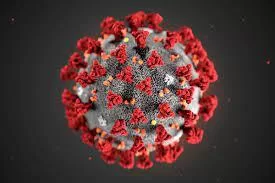The phrase, “living with the virus”, entered the pandemic-related vocabulary in China far later than in other parts of the world.
China is taking first steps towards living with the virus way later than other countries. It will be watched for how it raises the efficacy of its vaccines and protects its most vulnerable sections.
By: Editorial
December 10, 2022 6:20:47 am
On Wednesday, China’s National Health Commission (NHC) issued a set of guidelines, signalling, for the first time, that the country is rolling back its iron-fisted zero-Covid policy. The new measures limit lockdowns to apartment blocks, rather than entire districts and neighbourhoods. They allow people with mild Covid symptoms and those with asymptomatic infections to isolate at home, rather than in overcrowded hospitals or makeshift healthcare centres — measures that had caused widespread resentment in recent weeks. The country’s health authorities have also dropped the need for Covid tests to enter restaurants or entertainment venues. The announcements seem to have been precipitated by protests against the stringent restrictions. China’s daily caseload has also been falling steadily, after touching a peak of 40,000 on November 27. A section of epidemiologists is, however, worried that the world’s most populous country could be opening up hastily, without investing systematically in transitioning from the zero-Covid policy.
The phrase, “living with the virus”, entered the pandemic-related vocabulary in China far later than in other parts of the world. The country tried to beat the virus by keeping people behind closed doors for large parts of the pandemic and using exceptionally intrusive surveillance measures. Unlike most countries, China seemed to lack an exit strategy from Covid restrictions. For large parts of 2020 and 2021, the virus did have fewer opportunities to spread in the country. But this also meant that vast sections in China lacked the immunity — unrelated to vaccination — that comes with exposure to the virus. As epidemiologists had feared, this strategy would come a cropper with the virus developing extremely contagious variants.
After stonewalling global criticism of the country’s home-grown vaccines, in April, the director of the Chinese Centre for Disease Control and Prevention admitted that the efficacy rates of the shots needed to improve. China has, however, continued to resist collaboration with international vaccine manufacturers. Less than 70 per cent of the Chinese population over the age of 60 had received a booster dose when the anti-lockdown protests rocked the country. This may not seem too bad compared to most countries. But the world’s tryst with Covid has proved that resistance against the virus — the T cell defence — is a complex function of vaccination and exposure to the virus. People in China, in contrast, are inadequately protected — by an earlier infection or vaccination. In the coming weeks and months, China will be watched for how it raises the efficacy of its vaccines and protects its most vulnerable sections.
© The Indian Express (P) Ltd
